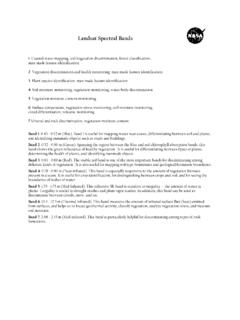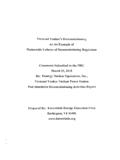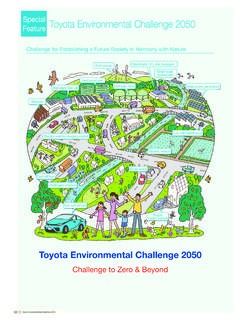Transcription of Renewable Energy Technologies in Uganda - AFREPREN
1 Renewable Energy Technologies in Uganda : The potential for geothermal Energy Development A Country Study Report under the AFREPREN /HBF study Supported by the Heinrich Boell Foundation By Geoffrey Kamese March, 2004 EXECUTIVE SUMMARY The purpose of this study was mainly to examine the viability of attaining a half of the 10% Renewable Energy Technologies (RETs) target -proposed at the Johannesburg World Summit on Sustainable Development (WSSD), and to assess the benefits and drawbacks of the target in Uganda . Other correlative objectives included the review of the status and potential of Renewable Energy Technologies ; RETs impact on national debt, balance of payments and other social sectors like health, education, water and agriculture and also the gender dimension of RETs and its benefits including job and enterprise creation.
2 The study does also consider the potential of available RETs in Uganda , which needs promotion in order to meet the country s Energy consumption and demand. Currently, Uganda s Energy consumption matrix stands at about 93% biomass, 5% petroleum products and 2% of electricity produced from two large hydro dams. The total generation capacity of electricity in the country is 326 MW. However, only 6% of the total population is estimated to have access to electricity of which only 1% comprises the rural population. Further the study also found out over 95% of Uganda s population depend on biomass for their Energy yet the cost of improved household and institutional stoves remain higher than many communities can afford. The major reasons for this low 6% access can be traced to the Siamese twin problem of access and affordability, coupled with policy framework biased towards big hydros and petroleum sources.
3 Others include inadequate and/or absent institutions (including institutional capacity), socio-economic factors and lack of adequate data on Energy sources (in terms of the resource characteristics, its quality, quantity, and availability). These has been further been aggravated by the inefficient supply and use of Renewable Energy Technologies , which have not been given a higher priority in national Energy programmes and planning. The Renewable Energy Technologies (RETs) considered in this studies are mainly geothermal and cogeneration, but also the status of other renewables including, Solar, Bio-fuels and Small hydro are outlined. The RETs study found out that there is political will and moral support extended to firms and organizations that produce, promote, or manufacture RETs in Uganda . The Ugandan government has also taken initiative to promote some of the RETs although, little has been achieved, so far.
4 The study considered the attainment of the 5% of the WSSD target using geothermal and cogeneration. It found out that Cogeneration plants can produce 10 MW currently but need to additional MW in order to meet the 5% WSSD targets. While for geothermal they can meet the target of 5% by installing a MW plant. The analysis shows that installing a MW plant would led lead to a creation of 11 jobs/MW for a geothermal plant and 10 jobs/MW for a cogeneration plant, as compared to setting up a 200 MW conventional big hydro plant which would generate 2 jobs/MW. Further analysis based on the foregoing plant sizes; indicate that cogenerating and geothermal power plants have a lower investment costs / MW than the hydro plant considered above. A 16,3 MW geothermal power plant costs 12% less, while for a MW cogenerating plant would cost 9% less, when they are compared to a 200 MW plant costing US$ million.
5 The geothermal and cogenerating plants will also have additional benefits of generating more jobs/MW, creation of more enterprises / MW and more importantly lead to more savings on foreign exchange and the subsequent advantage that they being green Technologies they can be used in Uganda s debt relief strategies. Considering these benefits, the study recommends of first importance increased capital flows and incentives to enable investment into this two Technologies which have low running costs but high initial set up costs. Further it recommends policy and institutional changes to enable market access by electricity generators of geothermal and cogeneration power plants. Further still, the study strongly proposes enhancement of research development and dissemination in the general area of RETs, and more specifically with respect to geothermal and cogeneration.
6 Such RD & D will target a broad array of stakeholders including manufacturers and marketers. Additionally the study points out the need for policy changes to allow for diversification, investments, guaranteed market prices, and distribution mechanisms that allow the setting up of Cogeneration and geothermal plants. It also indicates significant resources be channelled towards public awareness raising about RETs, capacity building of RETs institutions and human resources and lastly defining the roles and encouraging various stakeholders (civil society and private sectors) to be more active in the sector. i TABLE OF CONTENTS EXECUTIVE ABBREVIATIONS AND LIST OF LIST OF Overall Status of Energy Sector in Overall Status of Renewable Energy Status of geothermal and Data Collection and Data 15 Technical Economic, Policy and Gender KEY Overview of Uganda s Electrical Technical Viability of 5% geothermal and Cogeneration Economic Viability of 5% geothermal Benefits and Drawbacks of 5% geothermal Merits of geothermal and Demerits of geothermal and STUDY Recommendations for policy Recommendations for Recommendations for Lobbyists (civil societies, CBOs, NGOs etc).
7 33 Recommendations for End ii ABBREVIATIONS AND ACRONYMS ADB African Development Bank AERDP Alternative Energy Resource Development Program AES Applied Energy Services AES-NP AES Nile power BCSE Business Council for Sustainable Energy CBO Community Based Organization DANIDA Danish Development Agency EAP Energy Advisory Project ECA Export Credit Agency EDF European Development Fund ERT Energy for Rural Transformation GEEP geothermal Exploration GoU Government of Uganda GSMD Geological Survey and Mineral Development GTZ Gezellschaft fuer Technische Zusammenarbeit (German Technical Corporation) HIPC Highly Indebted Poor Countries IDA International Development Association IMF International Monetary Fund IRDI Integrated Rural Development Initiative IRN International Rivers Network KDA Karamoja Development Agency KSWL Kakira Sugar works limited MEMD Ministry of Energy and Mineral Development NAPE National Association of Professional Environmentalists NEAP National Environment Action Plan NEMA National Environmental Management Authority NGO Non-Governmental Organisation PV Photovoltaic REF Rural Electrification Fund RESP Rural Electrification Strategy and Plan RETs Renewable Energy Technologies SCOUL Sugar Corporation of Uganda Limited SMEs Small and Medium Enterprises TOE Tonnes of Oil Equivalent UAERAUS Uganda Alternative Energy Resources Assessment Utilisation Study UBOS Uganda
8 Bureau of Statistics UEB Uganda Electricity Board UEDCL Uganda Electricity Distribution Company Limited UEGCL Uganda electricity Generation Company limited. UETCL Uganda Electricity Transmission Company limited UNDP United Nations Development programme UPPPRE Uganda Photovoltaic Pilot Project for Rural Electrification URDT Uganda Rural Development Training UREA Uganda Renewable Energy Association iiiLIST OF FIGURES Figure :- Energy Consumption in Figure : Per Capita consumption fluctuations of Petroleum products (1983 2001)..3 Figure : - Biomass Trends in Uganda (1993 2001).. 4 Figure :- Dissemination of improved household stoves in Figure :- Small Hydro Power Generation Trends (1990 2002)..7 Figure : - Number of Solar Units Disseminated (1992 2002)..10 Figure : - Location of geothermal prospects of Figure :- Power produced from Cogeneration at Kakira Sugar Figure :- Electricity market structures by degree of Figure :- PSP model to bring in other stakeholders into the Energy LIST OF TABLES Table : Electrical generation capacity from main sources as at Table :- Estimated potential of some Small hydro sites in the Table :- Installed and expected increase in Cogeneration (MW).
9 17 Table : Eastern Africa geothermal specialist trained under the UNU/GTP (1979 2003)..17 Table :- Number of Jobs created in the Cogeneration plants (Jobs/MW)..18 Table :- Creation of Jobs per MW for both geothermal , cogenerating and Hydro Table :- Comparisons of investment costs of various power Table :- Projected investment costs of geothermal with other hydropower Table :- Energy sector loans as proportion of the external Table :- Savings on geothermal and cogeneration power Table :- Current electricity generating capacity in Table :- Attaining the 5 % WSSD targets using various Table :- Economic aspects of meeting the 5% WSSD targets using geothermal and cogeneration 27 Table :- Benefits and drawbacks of the 5% 28 iv INTRODUCTION As at 2002, the three east African countries had more or less similar Energy mix (Table ) in terms of electricity generation, with Kenya leading, followed by Tanzania and lastly Uganda .
10 Table Electrical generation capacity from main sources as at 2002 Country Hydro geothermal Coal Thermal Diesel Total Kenya 64% 8% 28% 1,141 MW Uganda 99 % 3 % 303 MW Tanzania 64% 1% 35% 902 MW Source: - CEEST and GTZ, 2002 Uganda is endowed with many forms of Energy sources that include large hydro, small hydro, geothermal , biogas, biomass, biomass-based cogeneration, wind, solar and more recently, petroleum - which is being explored in the rift valley region. However, sustainable use of these resources has been declining due to a number of factors. First are the numerous civil wars, which not only did affect its economic growth but also other development sectors like Energy .






